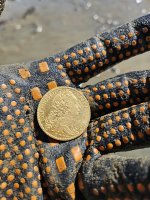KREQ600
Jr. Member
- Apr 7, 2019
- 37
- 46
- Detector(s) used
-
Minelab Equinox 600
Minelab Equinox 900
Minelab Vanquish 440
White's Coinmaster
- Primary Interest:
- All Treasure Hunting
Sure this has been discussed before numerous times, but what exactly is "mineralization" of the soil? I went by our local USDA Soil Conservation Office and asked them this question and they basically went: Huh?? Told them I did some metal detecting and they could not come up with a viable answer. To them, mineralization refers to the amount or distribution of organic nutrients present in the soil. I have seen this term used all over metal detecting forums and message boards, but there seems to be no definitive answer to this term or the way it is used to describe different soil types. So, in lay-men's terms, what is it and how does it relate to what we may find out in the fields we hunt as it refers to Ground Balancing? Per Minelab, the numbers that are shown on an Equinox 600 or 800 after Ground Balancing does not correspond to the mineralization of the soil in that, HI numbers does not indicated Hi mineralization nor does Low numbers indicate low mineralization.





